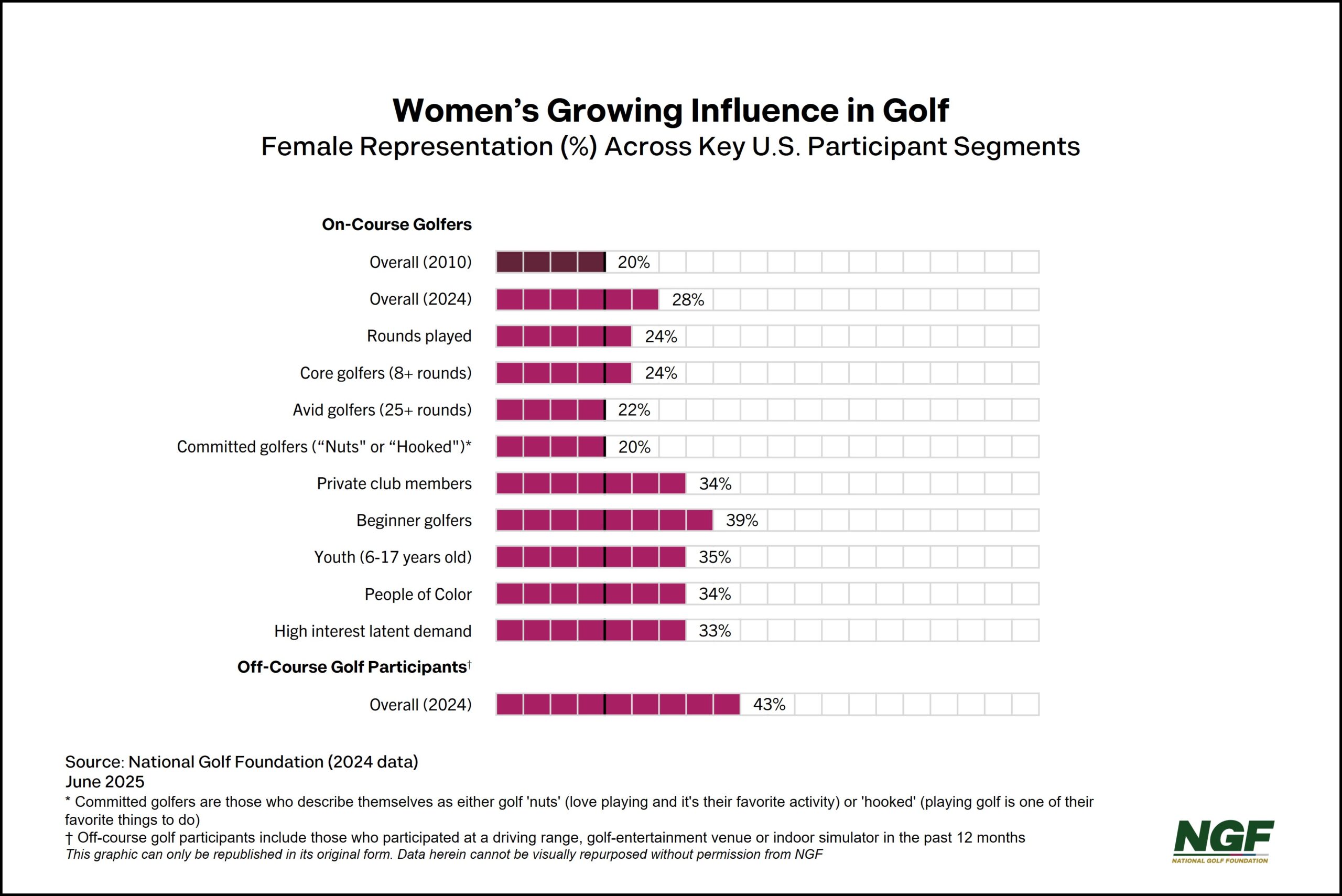Golf has a new face, and it’s younger, more diverse, and increasingly female.
Women and girls have quietly become the driving force behind golf’s post-pandemic resurgence, accounting for 60% of growth in on-course participation since 2019. This surge has pushed the female golfer count to a record 7.9 million – shattering the previous high of 7.1 million set in 2006, before the Great Recession disproportionately devastated women’s participation in the sport (female participation declined 28% from 2007 to 2011, compared to a 9% drop among male golfers).
The turnaround has been striking. A decade and a half ago, women represented just 1 in 5 “green grass” golfers. Today, they account for 28%. They’re also now a third of all golf participants when factoring off-course engagement like Topgolf, simulators and driving ranges.

What makes the growth particularly significant is its youthful energy. More than half of net participation gains among women have come from those under 30, and just under half of all women playing traditional golf are now under 35 – compared to roughly one in three male golfers. The average female on-course golfer is 4 years younger than her male counterpart. This generational shift is bringing new energy and expectations throughout the industry.
Equally encouraging is the cultural shift that’s taking hold. Nearly three-quarters of male Core golfers report either playing more with women or seeing more mixed groups on courses, while the majority of both male and female golfers believe increasing women’s involvement will be vital to the game’s future health.
Some have questioned the legitimacy of these trends and the growth we’ve reported in women’s participation, but our research shows 4 out of 5 Core golfers have witnessed the increase firsthand at their courses. This isn’t just a statistic – it’s a measurable transformation happening nationwide.
Despite the momentum, though, significant hurdles persist. Female golfers continue to lapse at higher rates than their male counterparts, and the conversion rate from beginner to committed golfer for women is less than half that of men.
Perhaps most telling is the loyalty disconnect within the industry. Very few of the female Core golfers in our research suggest feeling recognized by the golf brands and businesses they patronize – a gap that represents both a challenge and an opportunity for businesses willing to adapt.
Some brands and businesses are already taking proactive steps to address the recognition gap, signaling a broader industry awakening to this demographic shift.
The foundation for sustained growth is being set differently than it was 20 years ago. Its strength will likely depend on how well the golf industry continues building on this momentum – recognizing not just the numbers, but the cultural revolution these women are driving.
New Member Report: Female Participation & Engagement



